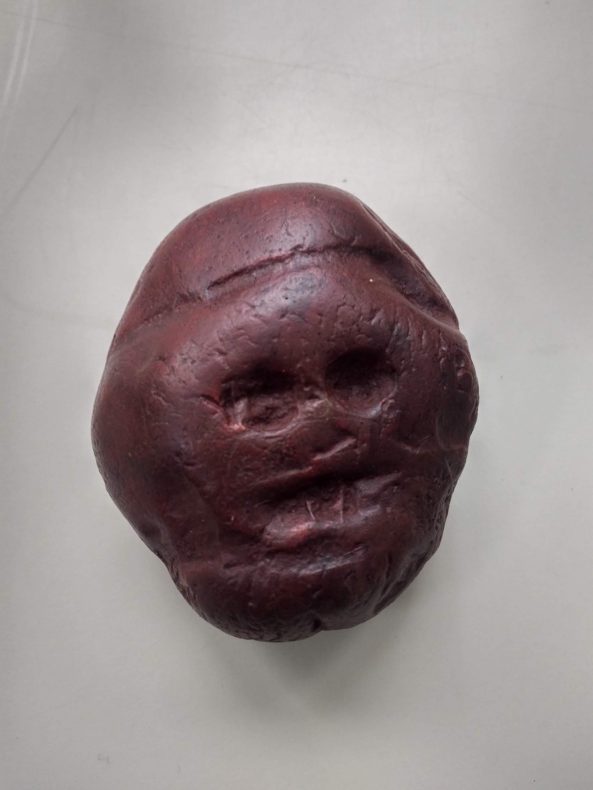
In 1925, teacher Wilfred Eitzman found a cobble—a rock slightly bigger than a pebble, the weight of a small rat—in a cave in Northern Province, South Africa. It was reddish brown with an unmistakable, prominent face etched into it.
Two deep and perfectly round eyes, a shallow divet for a nose, and grimacing, toothy mouth. An outline above the face turns the rounded stone into a head with hair. It looks for all the world like a little carving, but it wasn’t made by any human—it was found with the bones of an australopithecine who lived between 2.5 and 2.9 million years ago.
After a lot of speculation about whether this little rock guy had been created by its owner, researchers have concluded that it formed naturally, waterworn in a slow-moving stream twenty miles away, where similar jasperite material remains today. “I have never seen a natural stone object with such remarkable visual properties” writes one of the anthropologists who studied the stone.
For with enough time staring at this thing at various angles, in different lights and under microscopes, the scientists had declared there were, in fact, numerous faces on the rock.
There were at least three human faces, other than the obvious emoji-type happy-face drawing. One might have been a toothless old man with a battle-scarred eye. Along the sides, the profiles of animals may be sticking out.
To my own eye, some of these other faces are a bit of a stretch, borne of our brain’s pattern recognition function doing overtime. But that is kind of the point. Because as the world’s oldest ‘manuport’—something picked up by a ‘person’ and carried with them somewhere else—the pebble had no use at all, and no strike marks or pounding marks to suggest it had been used. It is hard to explain its place in this pre-human’s belongings unless he had picked it up and recognized his own kind in its shape.
It really was his own kind, more than our own sapiens sapiens kind, that was represented on the Makapansgat cobble. Artificial intelligence facial recognition algorithms don’t recognize it as a modern human’s face, but when compared with the flatter face of an Australopithecus africanus, the face is a much closer match.
This post originally appeared in February 2020.
“Nobody ever listened to me until they didn’t know who I was.” — Banksy